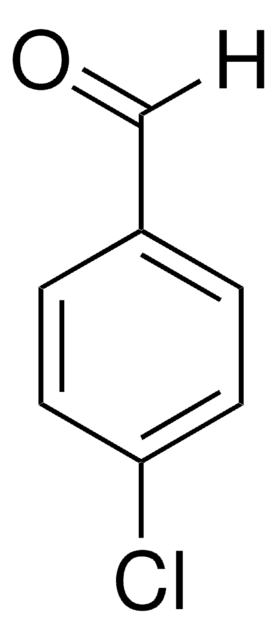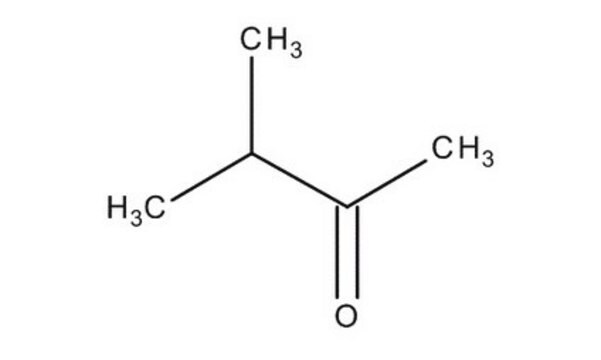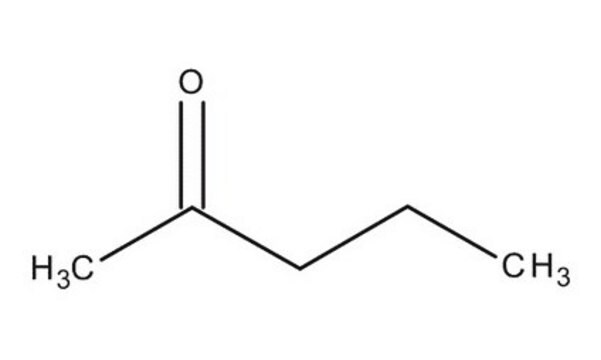8.03605
Diethyl ketone
for synthesis
Synonyme(s) :
Diethyl ketone, 3-Pentanone, Ethyl ketone
About This Item
Produits recommandés
Pression de vapeur
37.6 hPa ( 20 °C)
Niveau de qualité
Essai
≥99% (GC)
Forme
liquid
Température d'inflammation spontanée
425 °C
Puissance
2900 mg/kg LD50, oral (Rat)
16200 mg/kg LD50, skin (Rabbit)
Limite d'explosivité
1.6-7.7 % (v/v)
pH
6.2 (20 °C, 50 g/L in H2O)
pb
101-103 °C/1013 mbar
Pf
-40 °C
Température de transition
flash point 7 °C
Solubilité
50 g/L
Densité
0.81 g/cm3 at 20 °C
Température de stockage
2-30°C
Chaîne SMILES
O=C(CC)CC
InChI
1S/C5H10O/c1-3-5(6)4-2/h3-4H2,1-2H3
Clé InChI
FDPIMTJIUBPUKL-UHFFFAOYSA-N
Application
- Resonance Stabilization Effects on Ketone Autoxidation: Isomer-Specific Cyclic Ether and Ketohydroperoxide Formation in the Low-Temperature (400-625 K) Oxidation of Diethyl Ketone.: This study examines the low-temperature oxidation of diethyl ketone, highlighting how resonance stabilization influences the formation of specific cyclic ethers and ketohydroperoxides, vital for understanding combustion mechanisms and environmental implications of ketone use in industrial applications (Scheer AM et al., 2016).
- Low-temperature combustion chemistry of novel biofuels: resonance-stabilized QOOH in the oxidation of diethyl ketone.: This research focuses on the combustion chemistry of diethyl ketone as a biofuel, providing insights into the formation of resonance-stabilized QOOH intermediates which are crucial for developing more efficient and cleaner burning fuels (Scheer AM et al., 2014).
- Wet effluent diffusion denuder technique and determination of volatile organic compounds in air. I. Oxo compounds (alcohols and ketones).: Explores the use of diethyl ketone in air quality monitoring, employing a novel wet effluent diffusion denuder technique for the sensitive detection of oxo compounds, vital for environmental monitoring and regulatory compliance (Pesková J et al., 2001).
- Identification limits for volatile organic compounds in the blood by purge-and-trap GC-FTIR.: Discusses the detection limits of volatile organic compounds, including diethyl ketone, in blood using advanced purge-and-trap gas chromatography coupled with Fourier-transform infrared spectroscopy, emphasizing its importance in forensic and toxicological analyses (Ojanperä I et al., 1998).
Remarque sur l'analyse
Density (d 20 °C/ 4 °C): 0.813 - 0.815
Identity (IR): passes test
Mention d'avertissement
Danger
Mentions de danger
Conseils de prudence
Classification des risques
Eye Irrit. 2 - Flam. Liq. 2
Risques supp
Code de la classe de stockage
3 - Flammable liquids
Classe de danger pour l'eau (WGK)
WGK 1
Point d'éclair (°F)
44.6 °F
Point d'éclair (°C)
7 °C
Certificats d'analyse (COA)
Recherchez un Certificats d'analyse (COA) en saisissant le numéro de lot du produit. Les numéros de lot figurent sur l'étiquette du produit après les mots "Lot" ou "Batch".
Déjà en possession de ce produit ?
Retrouvez la documentation relative aux produits que vous avez récemment achetés dans la Bibliothèque de documents.
Les clients ont également consulté
Notre équipe de scientifiques dispose d'une expérience dans tous les secteurs de la recherche, notamment en sciences de la vie, science des matériaux, synthèse chimique, chromatographie, analyse et dans de nombreux autres domaines..
Contacter notre Service technique











